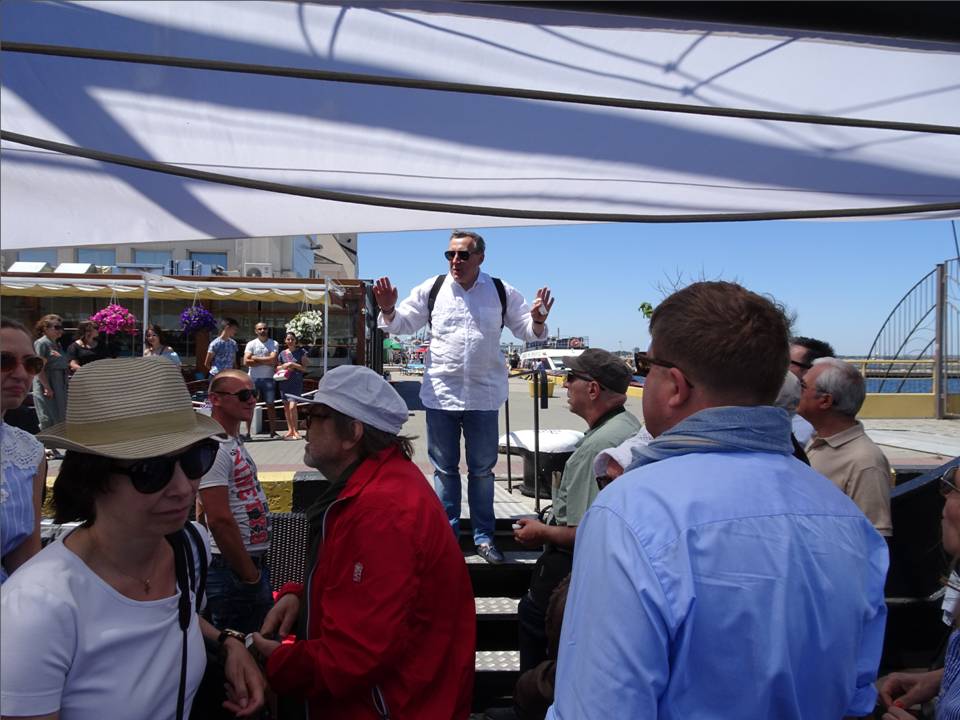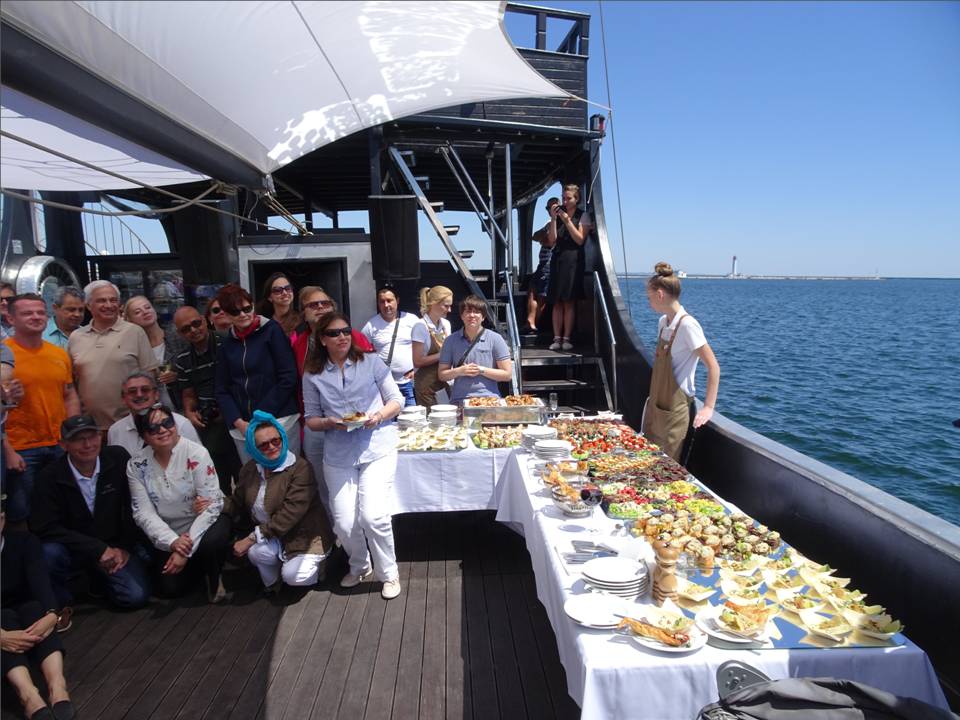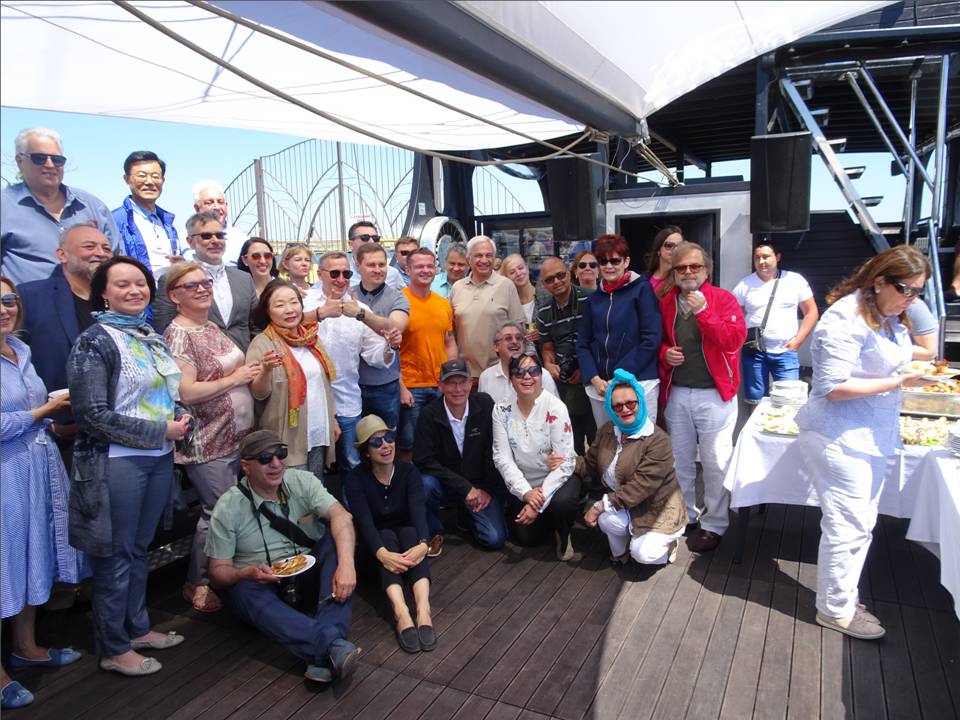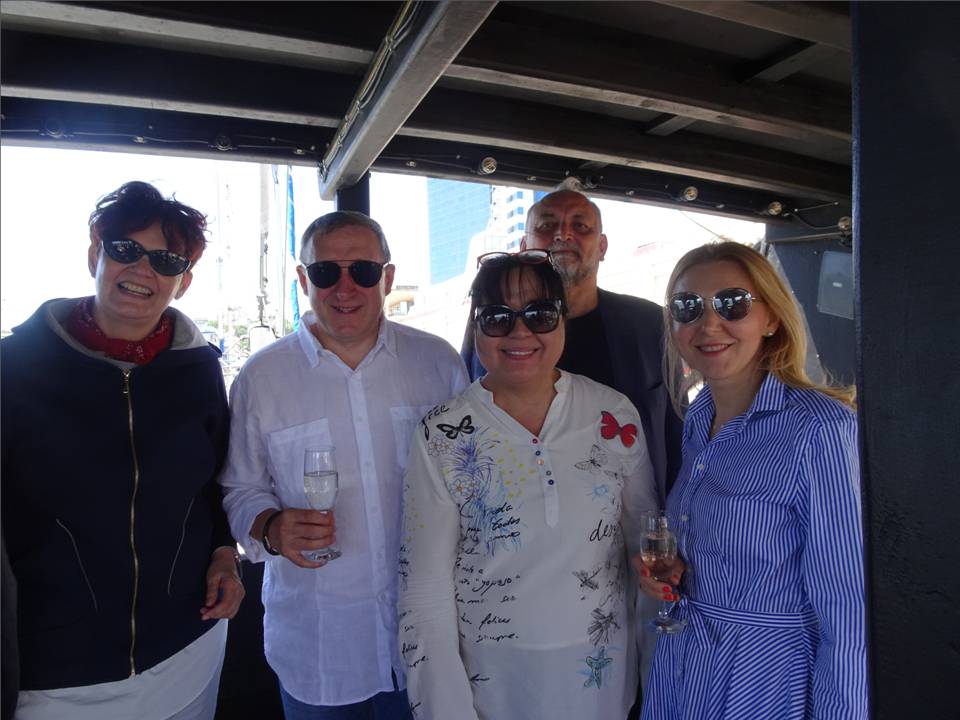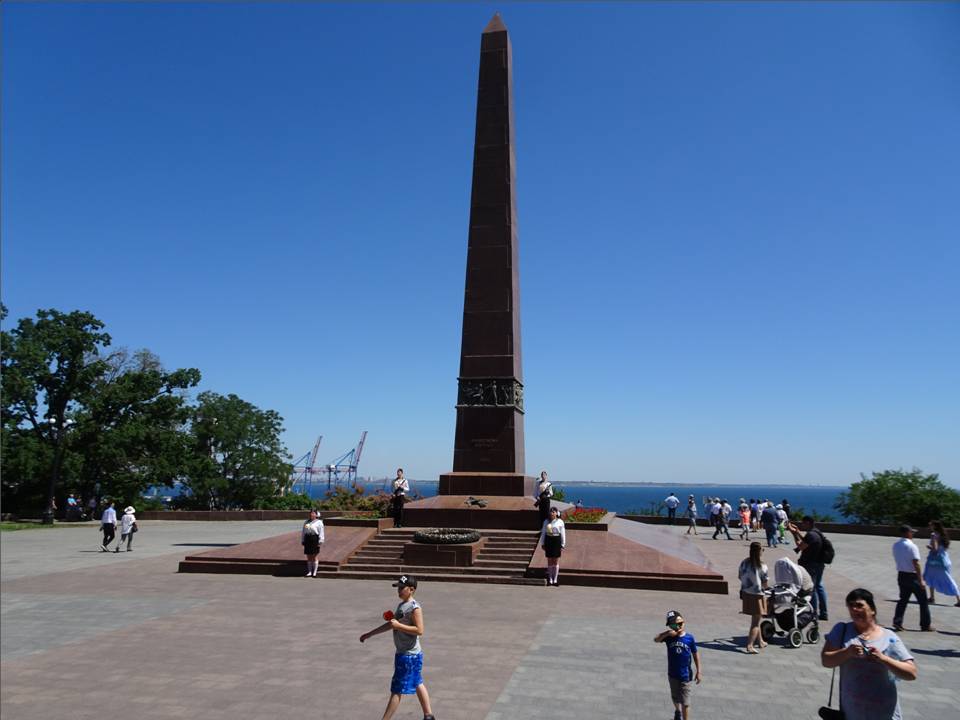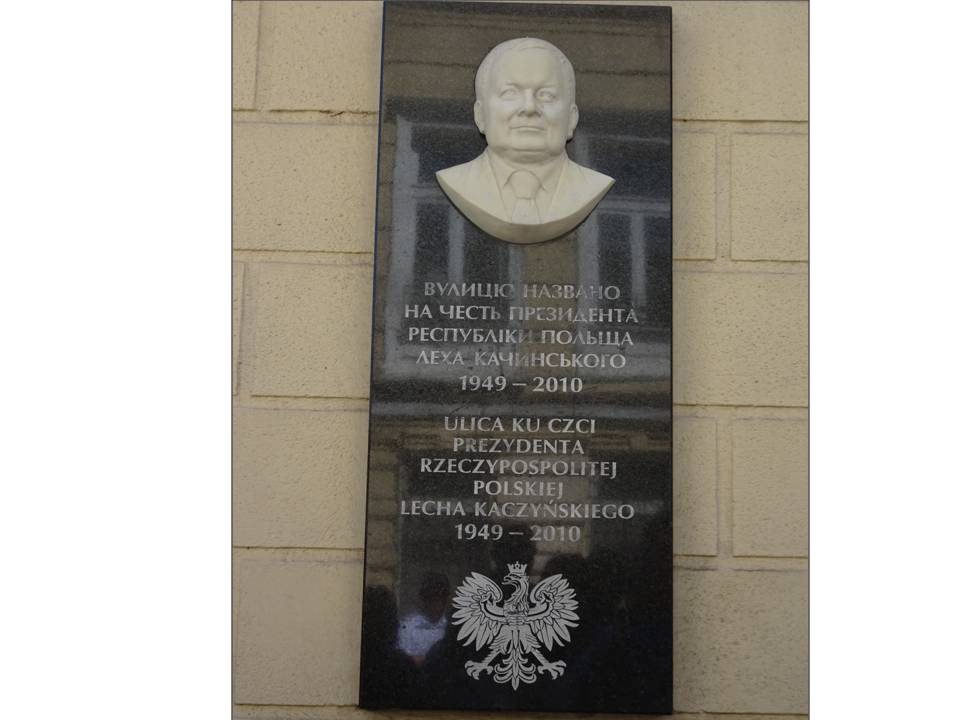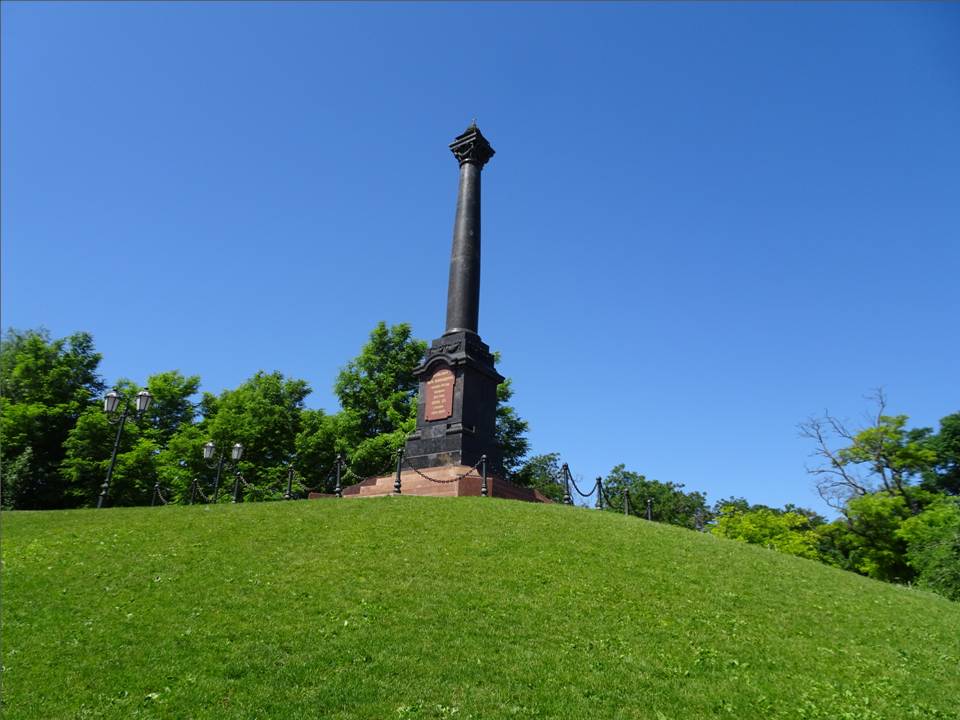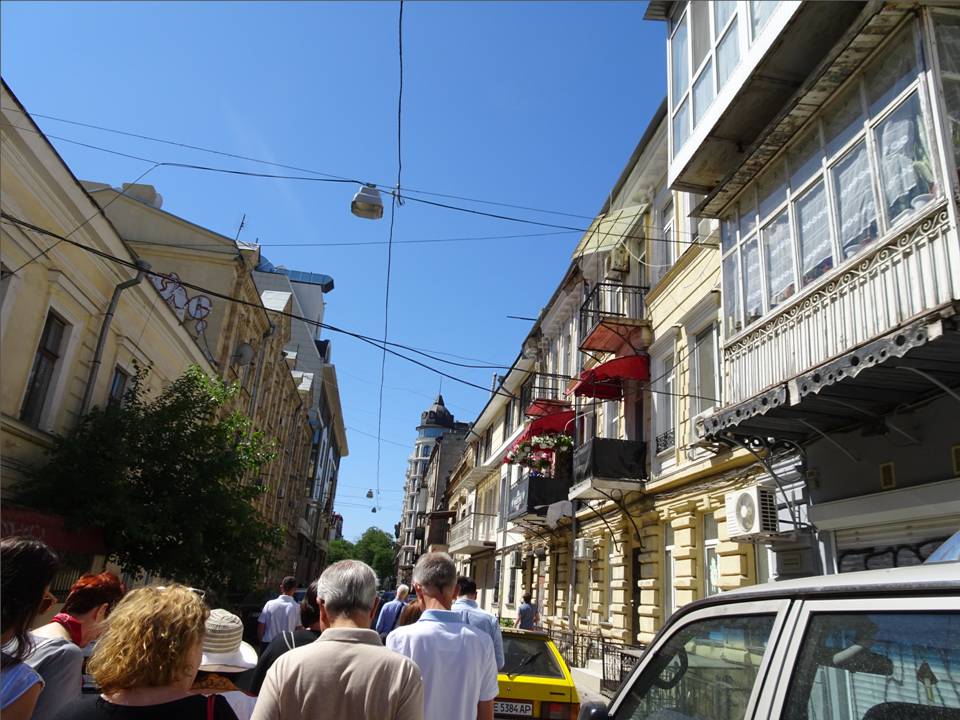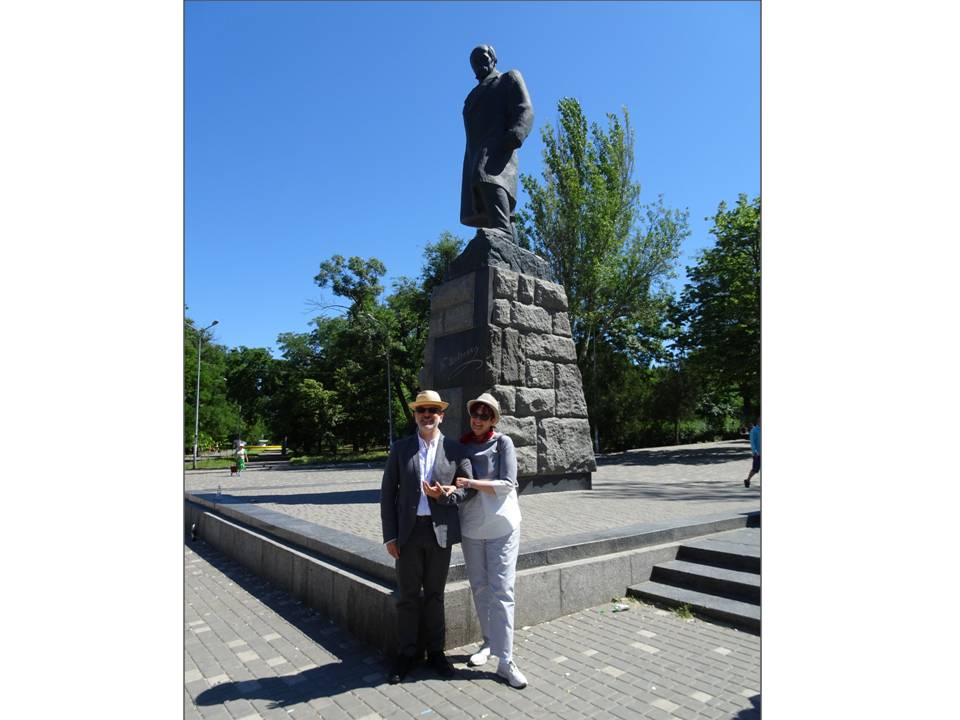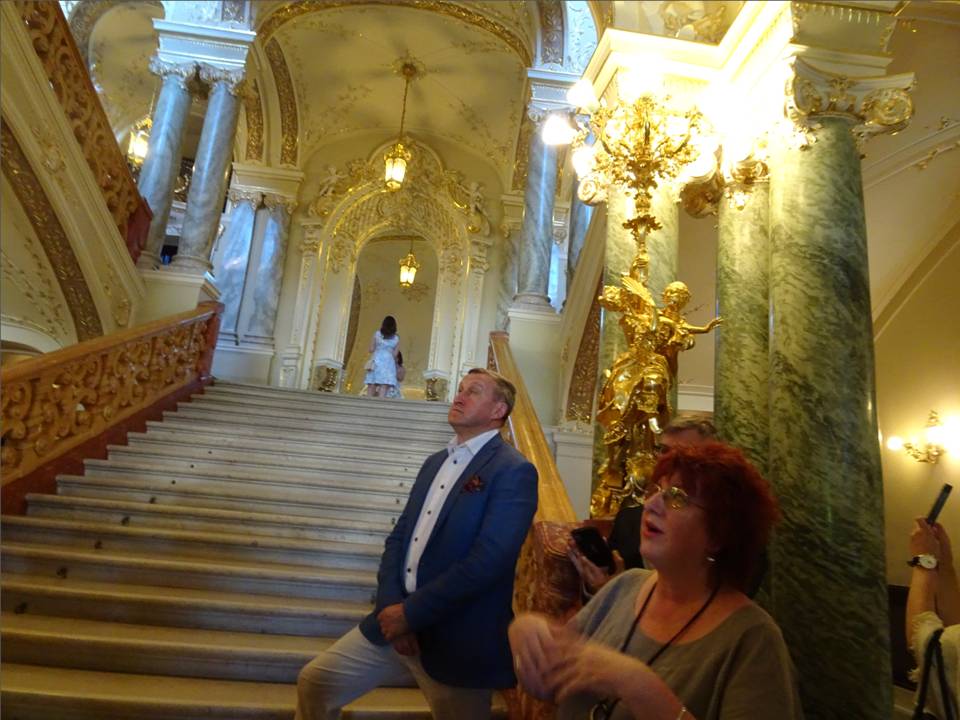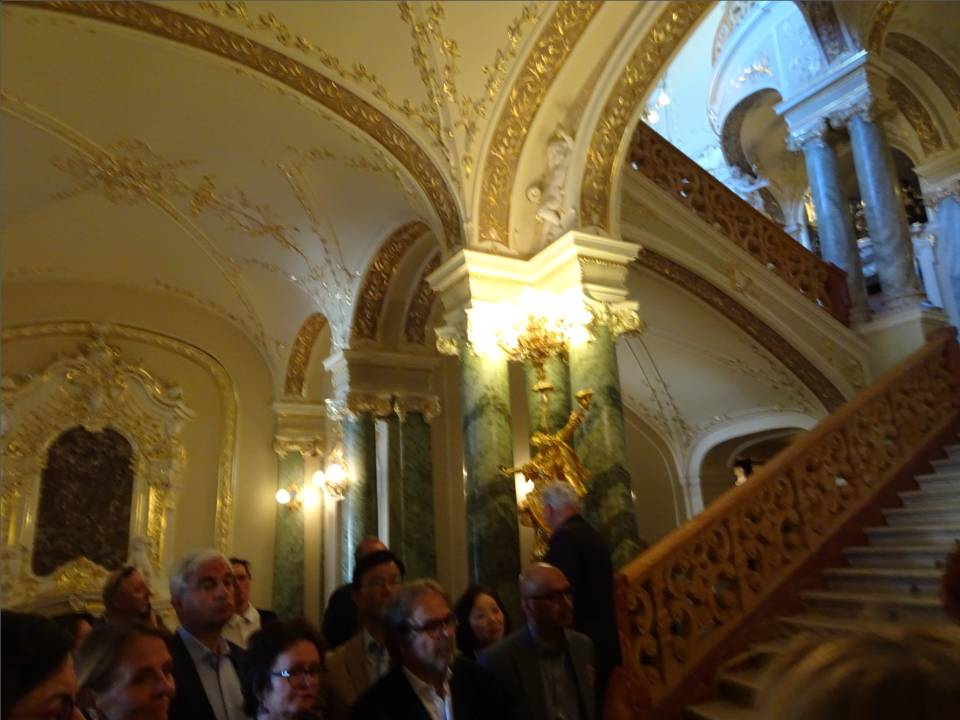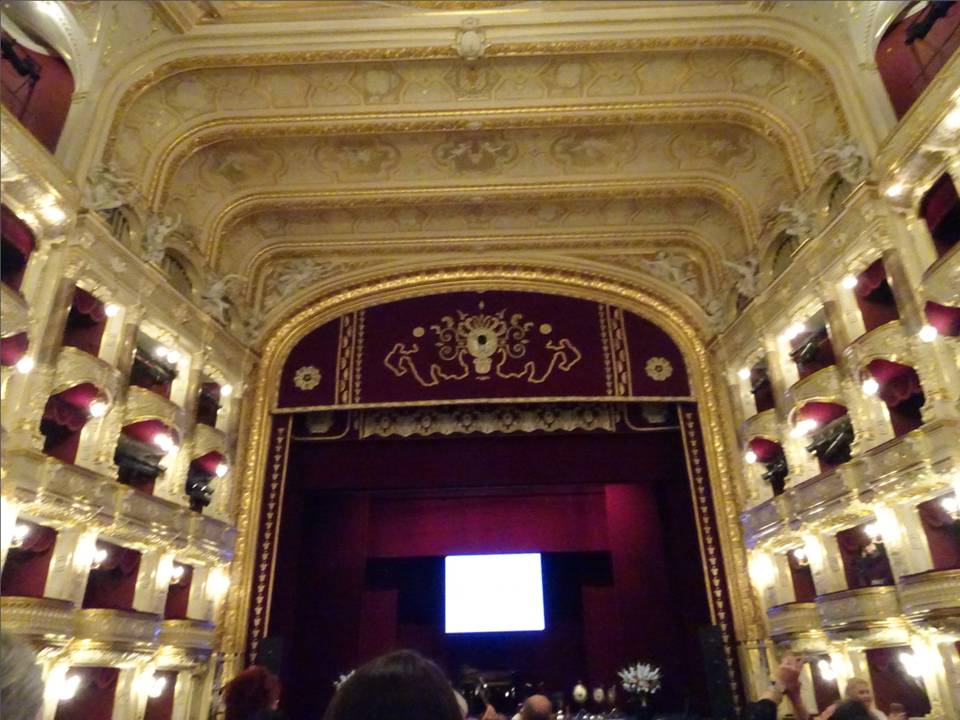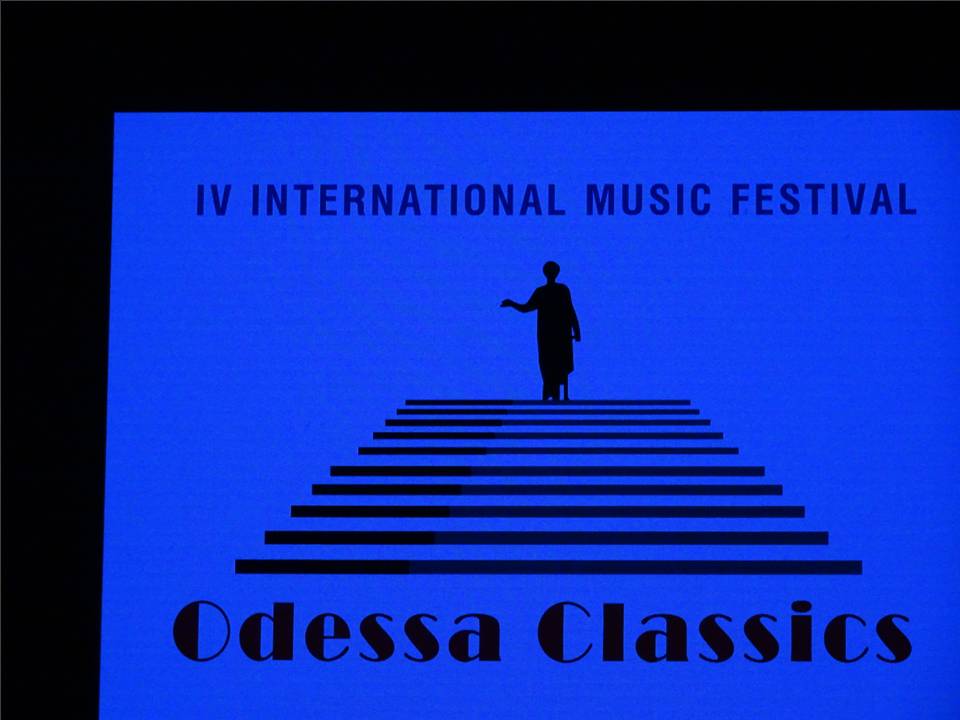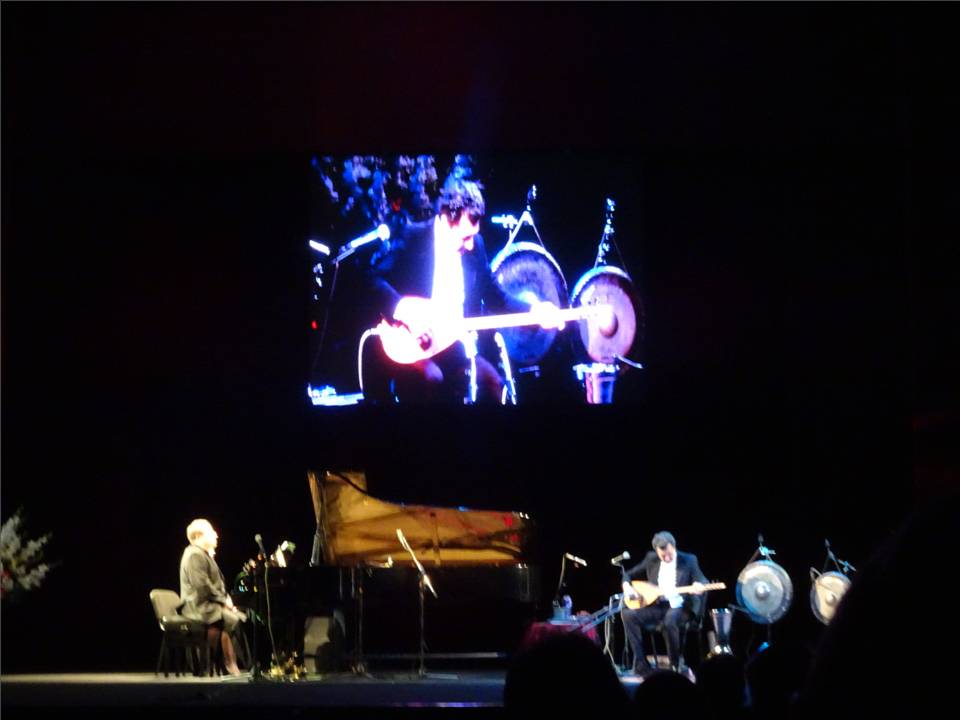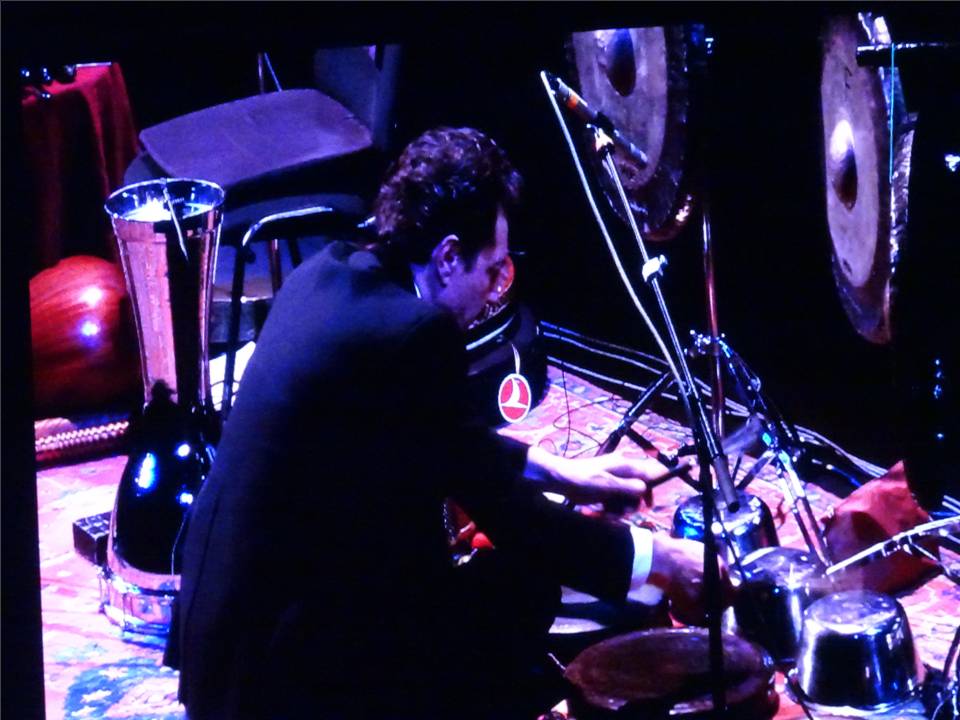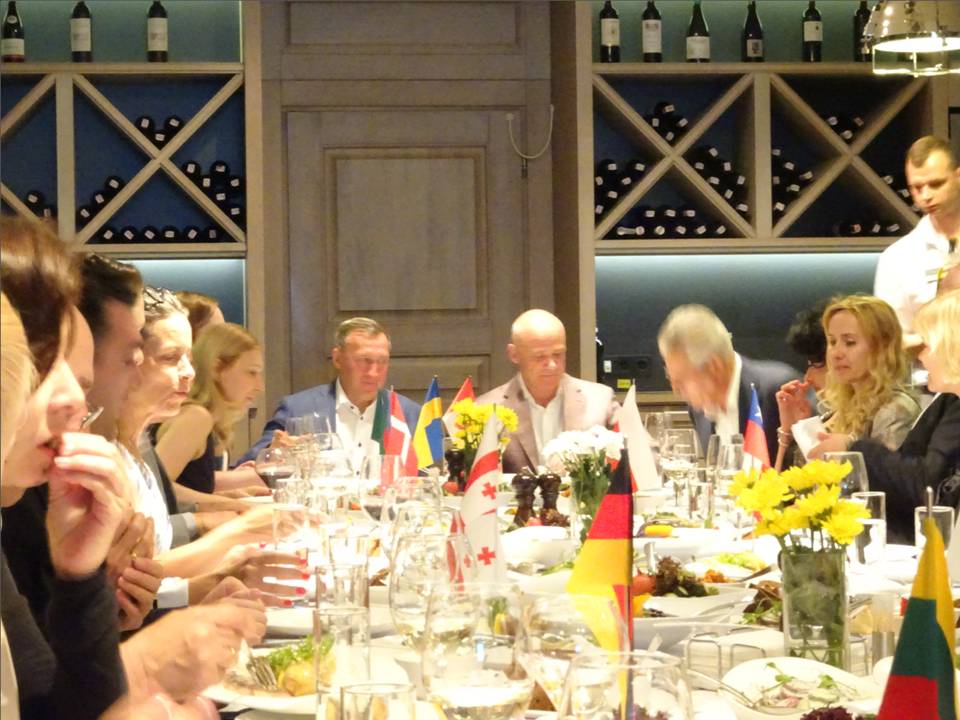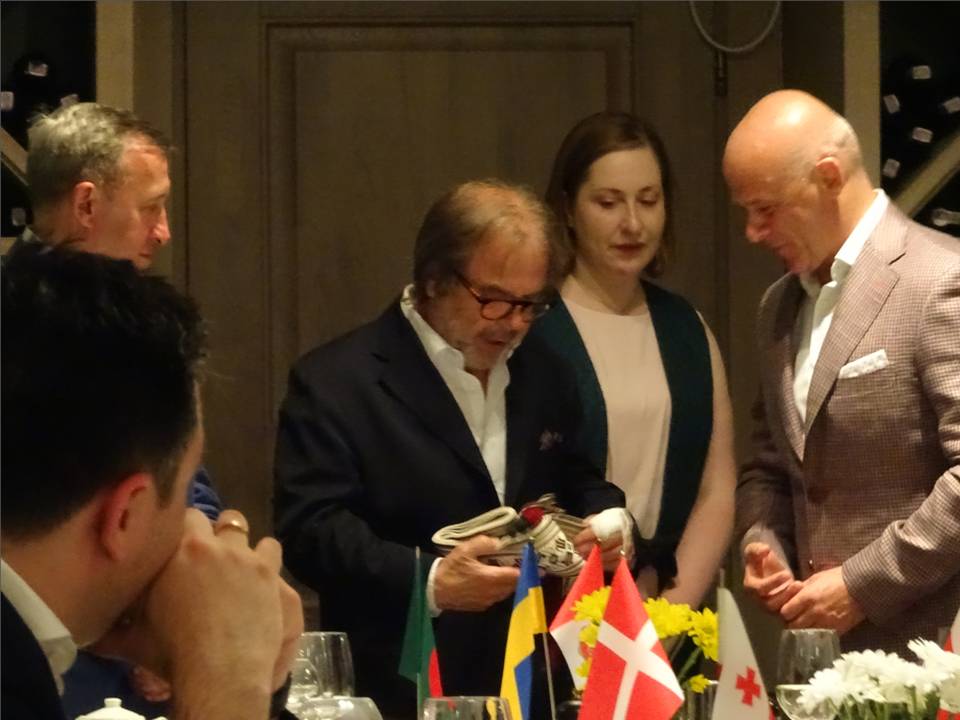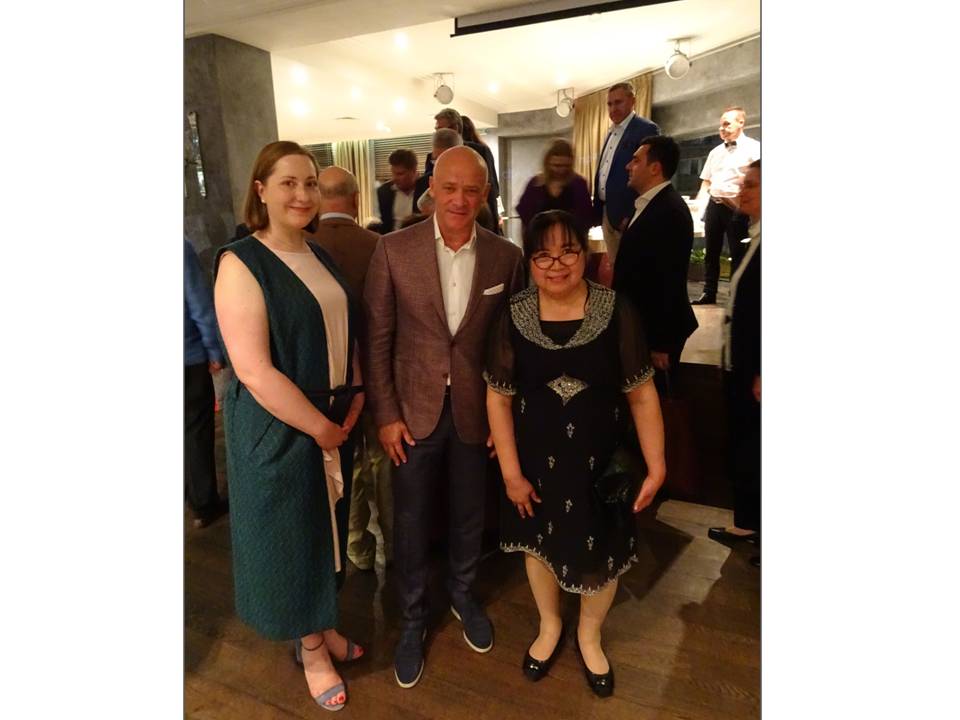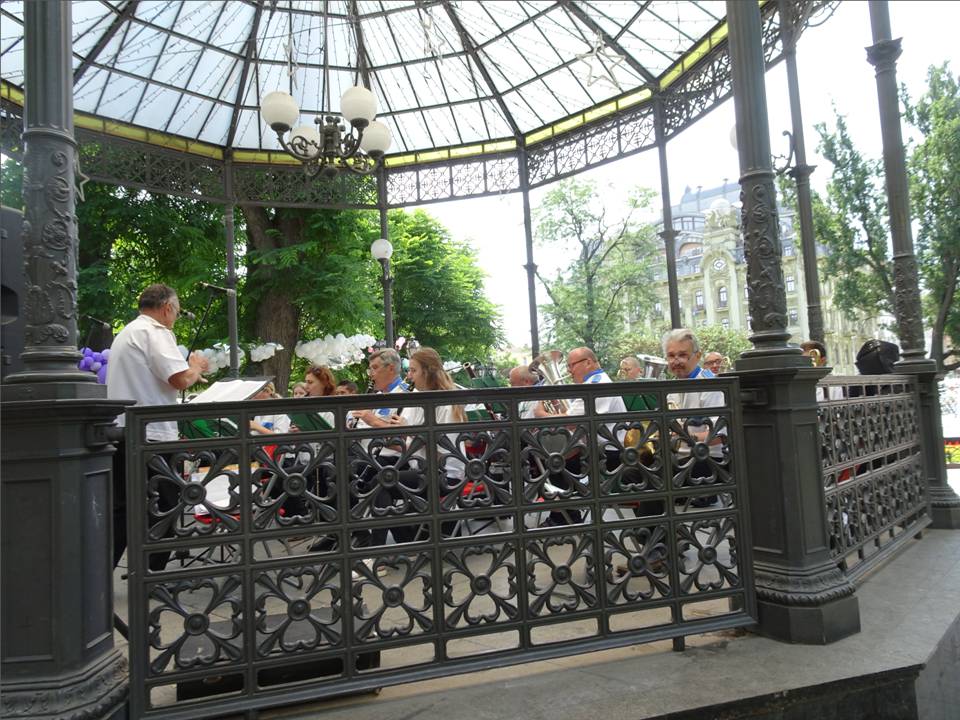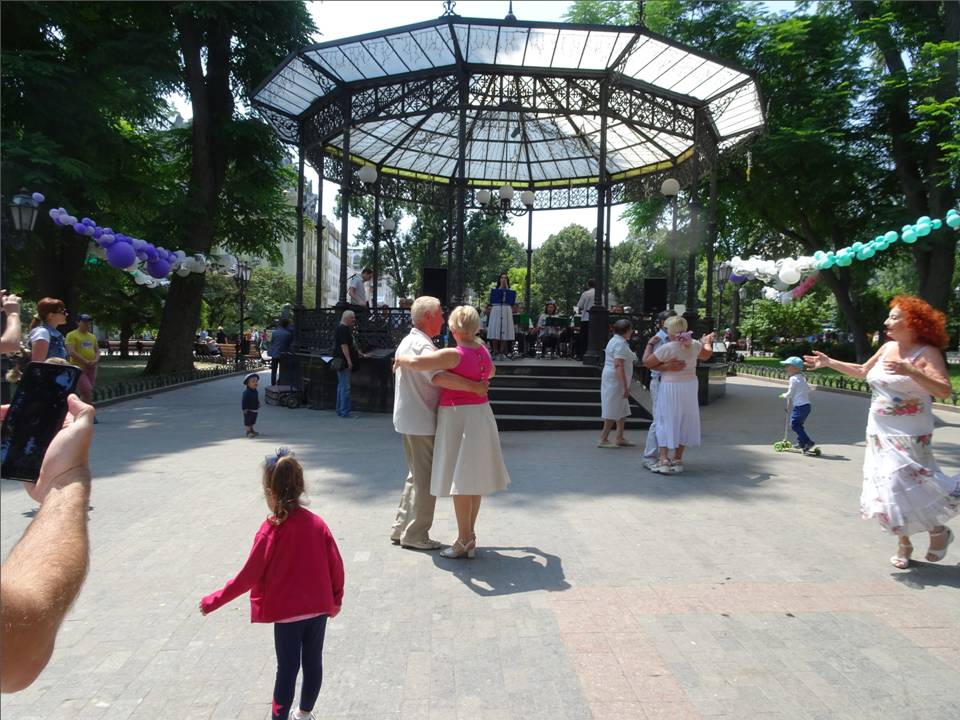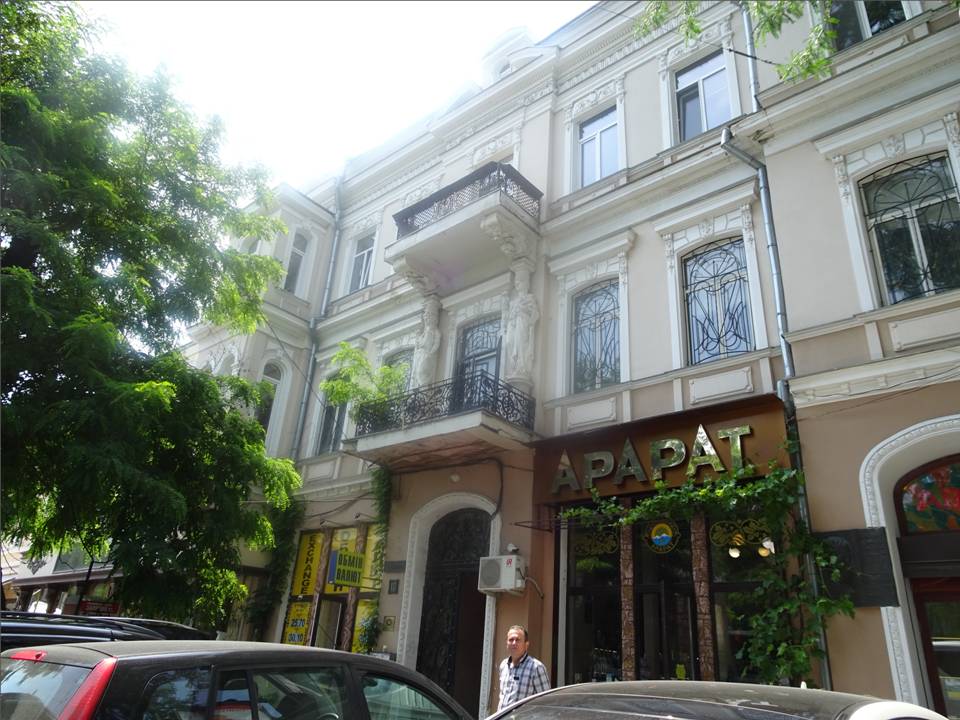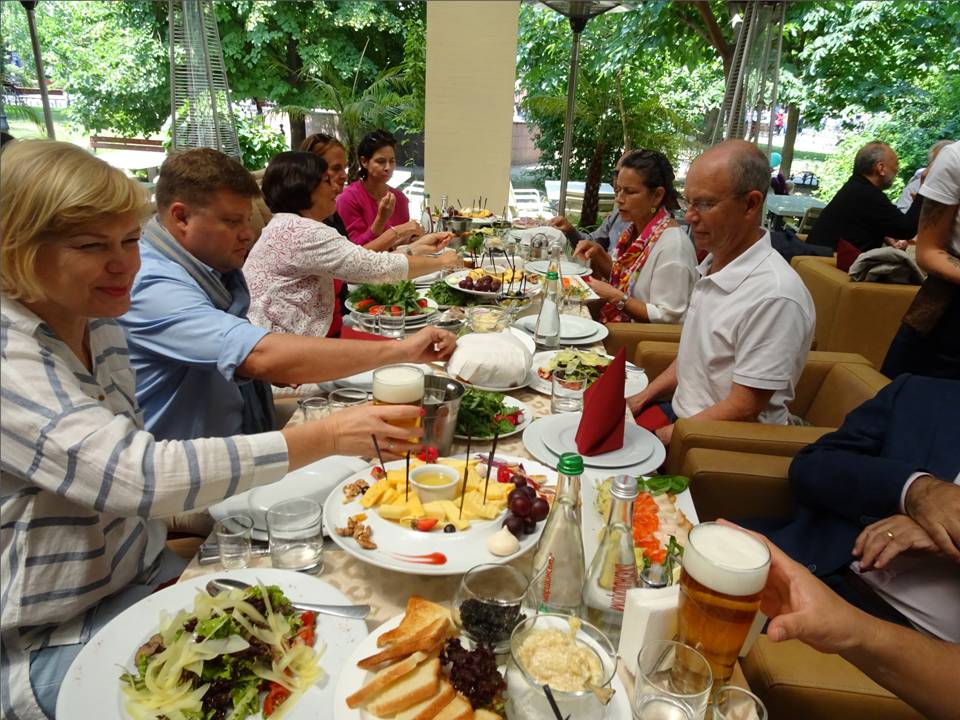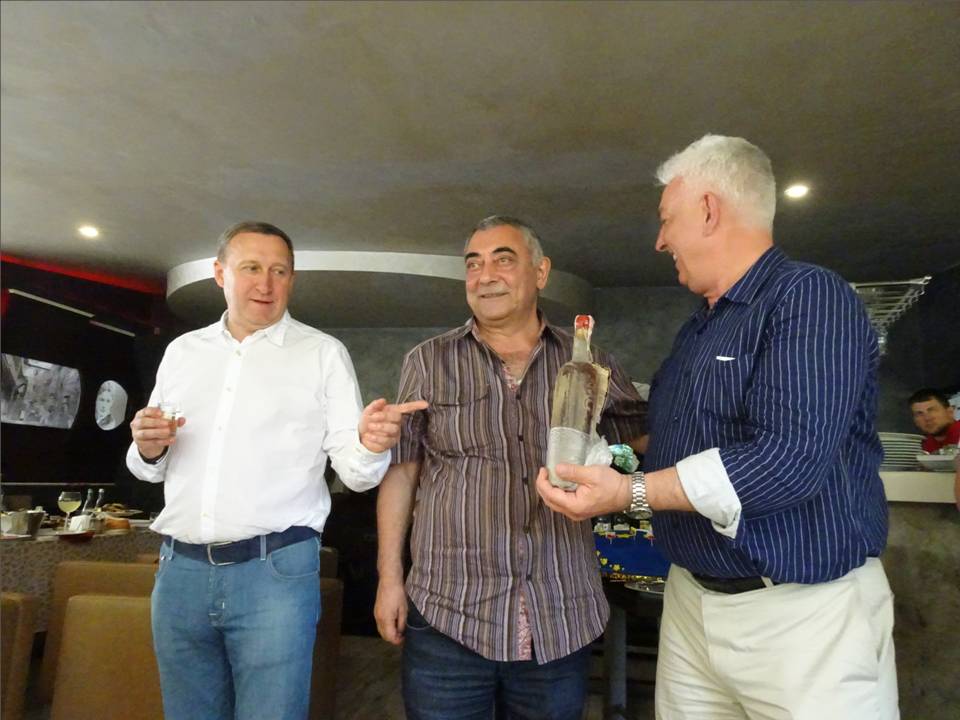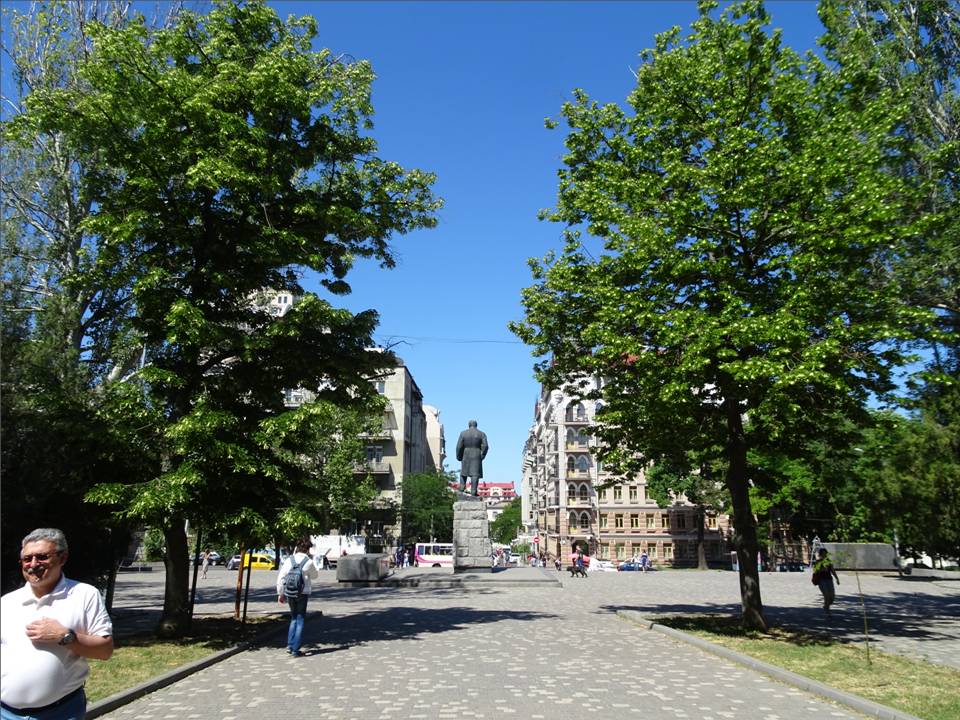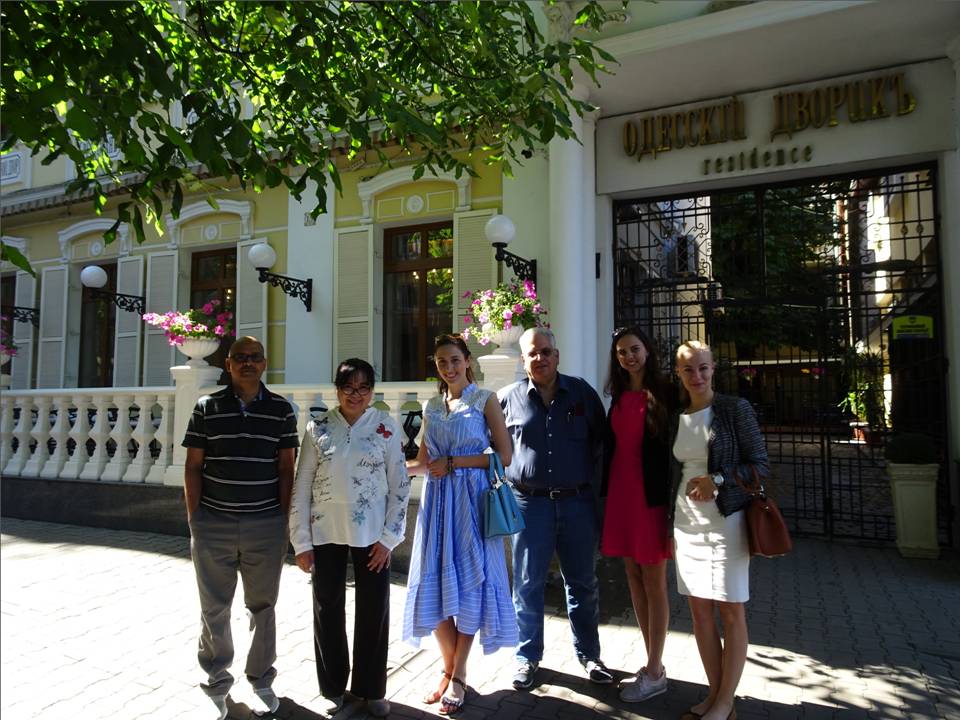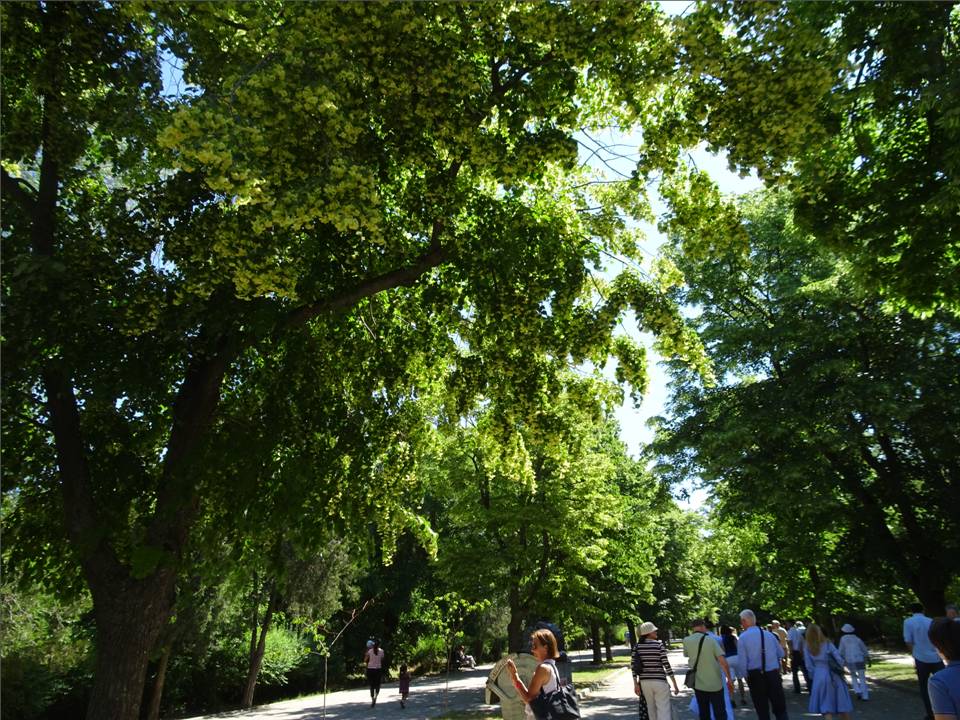Ukraine’s Ambassador to Poland H.E. Mr. Andrii Deshchytsia (center); also in photo is the wife of Germany’s ambassador Mrs. Olivia Nikel (extreme left, with hat)
Ukraine’s Ambassador H.E. Mr. Andrii Deshchytsia invited the ambssadors accredited to Poland to a promotional visit to the city of Odessa in Ukraine from 01 June to 03 June 2018.
The visit was a collaboration of the Embassy of Ukraine, the Ministry of Foreign Affairs and the Ministry of Economic Development and Trade of Ukraine, Poland’s Ministry of Foreign Affairs, and the local officials of Odessa.
Cruise of the Black Sea and a lunch buffet of Ukranian cuisine
Odessa - called the “pearl of the Black Sea” - is located on the northwestern shore of the Black Sea and is the third most populous city of Ukraine. It is the administrative center of the Odessa Oblast and is a major tourism and cultural center as well as a key seaport and transport hub.
Odessa’s total population is estimated as over 1 million people. Among its key industries are shipbuilding, oil refining, chemicals, metalworking and food processing. Odessa is also a Ukrainian naval base and home to a fishing fleet.
The city of Odessa was founded in 1794 through a decree of the Russian empress Catherine the Great. From 1819 to 1858, Odessa was a free port. During the Soviet period it was the most important port of trade and was a Soviet naval base. On 1 January 2000, the Quarantine Pier at Odessa Commercial Sea Port was declared a free port and free economic zone for a period of 25 years.
The ambassadors pose for a group photo while cruising the Baltic Sea
L to R: The wife of the Ambassador of Uruguay Mrs. Marta Rodriguez Planke, Ukraine’s Ambassador Mr. Andrii Deshchytsia , Philippine Ambassador Ms. Patricia Ann Paez, Mrs. Iryna Deshchytsia; at the back is Venezuelan ambassador H..E. Mr. Luis Adolfo Gomez Urdaneta
In the heart of the city of Odessa is a memorial plaque in honor of the late President of Poland H.E. Mr. Lech Kaczynski. He was the 8th president of Poland who was elected to the position in 2005 but who died in a plane crash near Smolensk on 10 April 2010. The memorial plaque was installed on the facade of a house located at number 1 Kachinsky street and was officially unveiled on 27 May 2010.
Memorial plaque in honor of the late President of Poland H.E. Mr. Lech Kaczynski.
Odessa's largest park, Shevchenko Park (formerly known as the Alexander Park), was founded in 1875, during a visit to the city by Emperor Alexander II. Spanning an area of around 700 by 900 meters , it is located on the side of the city which is closest to the sea. In the center of the park one can find the local top-flight football team's Chornomorets Stadium, the Alexander Column and municipal observatory.
Alexander’s Column in Shevchenco Park
The well-preserved houses, buildings and other structures reflect various architectural styles and bear witness to Odessa’s heritage
During the 19th century, Odessa was the fourth largest city of Imperial Russia, after Moscow, Saint Petersburg and Warsaw.[5] Its historical architecture has a style more Meditteranean than Russian, having been heavily influenced by French and Italian styles. Some buildings are built in a mixture of different styles, including Art Nouveau,Renaissance and Classicist.[6]
As a free port, the city became a magnet for diverse ethnicities such as the Albanians, Armenians, Azeris, Bulgarians, Crimean Tatars, Frenchmen, Germans (including Mennonites), Greeks, Italians, Jews, Poles, Romanians, Russians, Turks, Ukrainians, and traders representing many other nationalities. This explains the varied "ethnic" names on the city's map, such as Frantsuzky (French) and Italiansky (Italian) Boulevards, Grecheskaya (Greek), Yevreyskaya (Jewish), Arnautskaya (Albanian) Streets).
Odessa’s cosmopolitan character was chronicled by the great Russian poet Alexander Pushkin, who lived in Odessa between 1823 and 1824, to wit: “(Odessa was) a city where ‘the air is filled with all Europe, French is spoken and there are European papers and magazines to read’.”
In 1905, Odessa was the site of a workers' uprising supported by the crew of the Russian battleship Potemkin and Lenin's Iskra. The world-renowned movie entitled The Battleship Potemkin commemorated this uprising. It showed a scene where hundreds of Odessan citizens were murdered on the great stone staircase, now popularly known as the "Potemkin Steps" (Primorsky Stairs). The Potemkin Steps is a “ vast staircase that creates an illusion so that those at the top only see a series of large steps, while at the bottom, all the steps appear to merge into one pyramid-shaped mass...the original 200 steps (now reduced to 192) were designed by Italian archietect Frnacesco Boffo and built between 1837 and 1841.
At the top of the steps, which lead down to the port, stands a statue of the Duc de Richelieu. Having fled the French Revolution, he had served in Catherine's army against the Turks. Duc de Richelieu, served as the city's governor between 1803 and 1814. He is credited with having designed the city and laying down its infrastructure. Duc de Richelieu and is considered one of the founding fathers of Odessa, together with another Frenchman, Count Andrault de Langeron - his successor as the city’s governor.
Ambassador of Uruguay H.E. Mr. Pablo Schneiner and wife Mrs. Martha Rodririguez Planke
Odessa’s Opera and Ballet Theatre is one of the city’s famous archietectural monuments in 1987. It was destroyed by fire in 1873 and fully reconstructed in 2007 in neo-baroque style by Fellner and Helmer while its grandiose halls were built in the rococo style.
The ambassadors were taken to a tour of the Odessa National Academic Theatre of Opera and Ballet Theatre before watching the Odessa Classics Festival.
L to R: Finland’s ambassador H.E. Mrs. Hanna Katariina Lehtinen (2nd from left); Turkey’s ambassador H.E. Mr. Tahsin Tunc Ugdul, wife of Lithuania’s envoy Mrs. Ona Adomaviciene, Lithuania’s ambassador H.E. Mr. Sarunas Adomavicius; Bangladesh’s ambassador H.E. Mr. Muhammad Mahfuzur Rahman; at the back are South Korea’s ambassador H.E. Mr. Sing Joo Choi and his wife Mrs. Yoo Soon Shin in Odessa’s Opera and Ballet Theatre
Inside the grand and luxurious theater
Featured performers during the “Odessa Classics” were pianist Mr. Oleksii Botvinov and percussionist Mr. Burhan Ocalia
Mr. Burhan Ocal
Dinner hosted by the Mayor of Odessa Mr. Gennady Trukhanov (center right) at the “Babel Fish” restaurant; at the center left is Ambassador Deshchytsia
Lithuania’s ambassador H.E. Mr. Adomavicius (center) presents a Lithuanian sash - a symbol of friendship - to Mayor Trukhanov (extreme right); looking on is ambassador H.E. Mr. Deshchytsia (extreme left)
Mayor Trukhanov (center) and Amb. Paez
The City Garden, or Gorodskoy Sad, which is located in the heart of the city is the most famous of Odessa's gardens. It was “laid out in 1803 by Felix De Ribas (brother of the founder of Odessa, José de Ribas) on a plot of urban land he owned.” Today, the garden is home to a bandstand whose music always entices the city folks and visitors alike to spontaneous dancing in public view.
Free public concert by a band at the City Garden or Gorodskoy Sad
Odessans dancing in the park show their zest for life
The Armenian community in Odessa hosted a farewell lunch at the City Garden restaurant which is located in the park of the same name
The president of the Polish Vodka Association Mr, Andrzej Szumowski (extreme right) gave a token of appreciation to the representative of the Armenian community which hosted the lunch; photo also shows Amb. Deshchytsia (extreme left)
Ambassador of Chile H.E. Mr. Julio Bravo Yubini enjoy a stroll in one of Odessa’s lush and green parks
Bangladeshi ambassador H.E. Mr. Muhammad Mahfuzur Rahman, (extreme left), Amb. Paez (2nd from left) and Panama’s ambassador H.E. Mr. Enrique Antonio Zarak Linares, together with officers and staff of Odessa’s city government in front of Odeskyj Dvoryk hotel where the envoys were billeted
Tourists flock to Odessa especially during summertime
(END)

